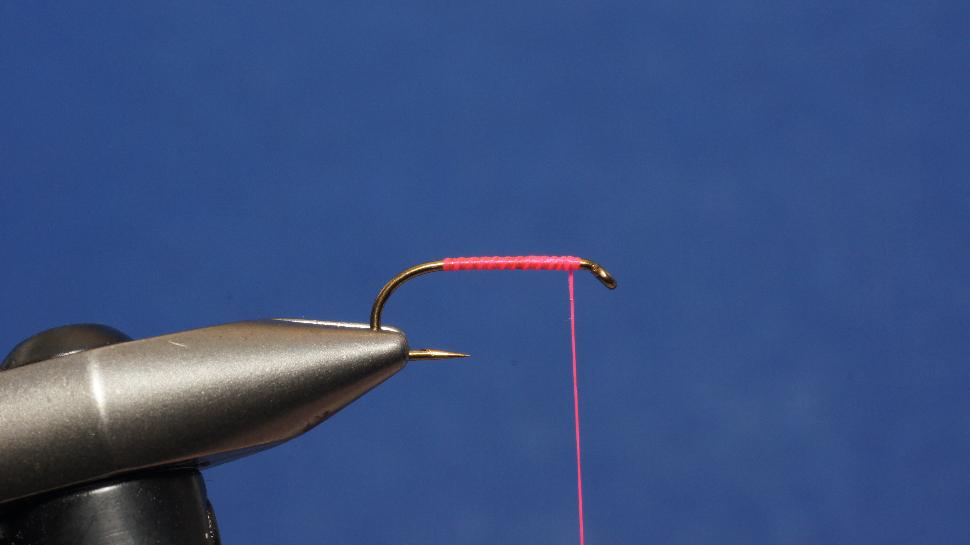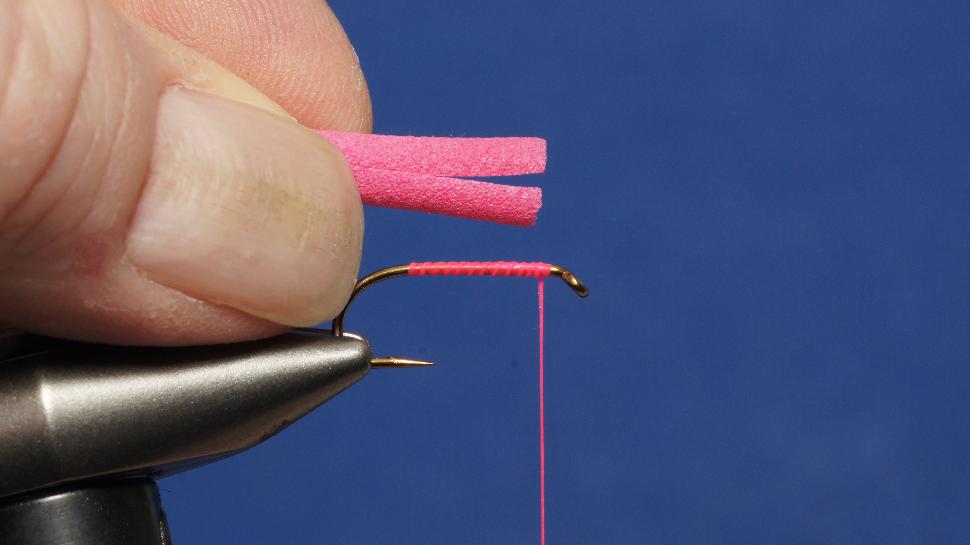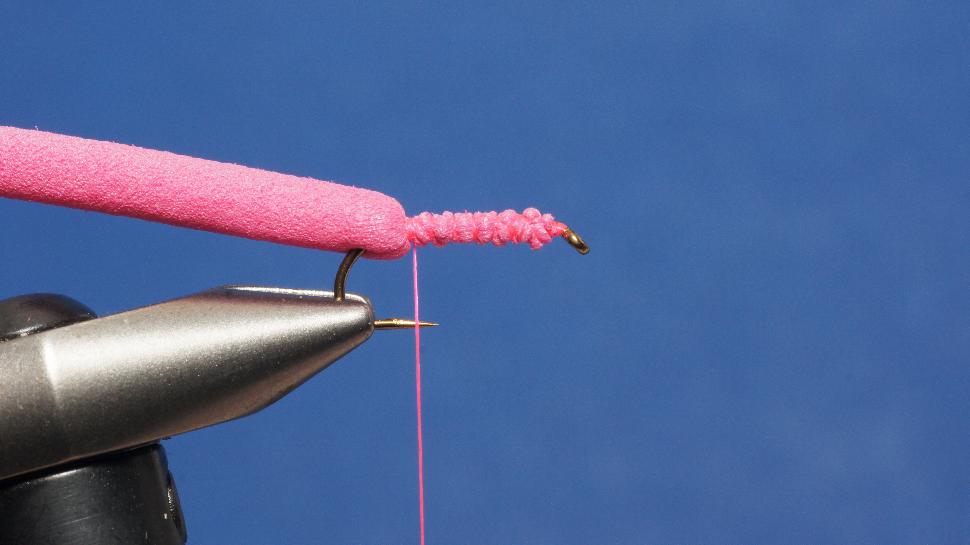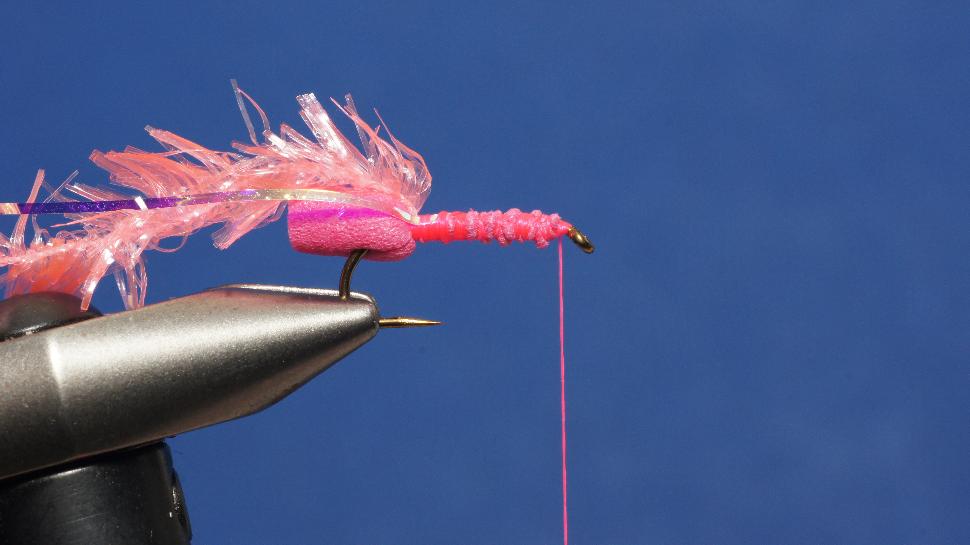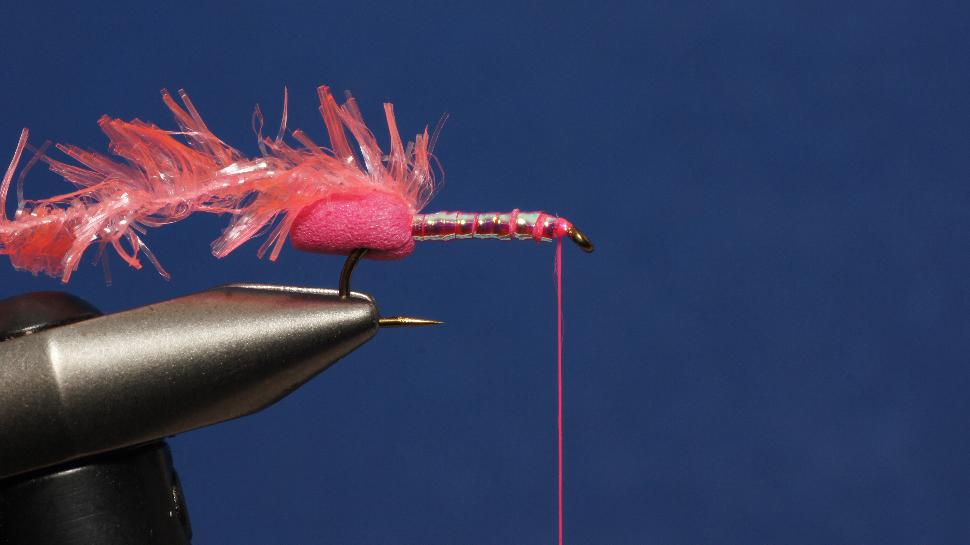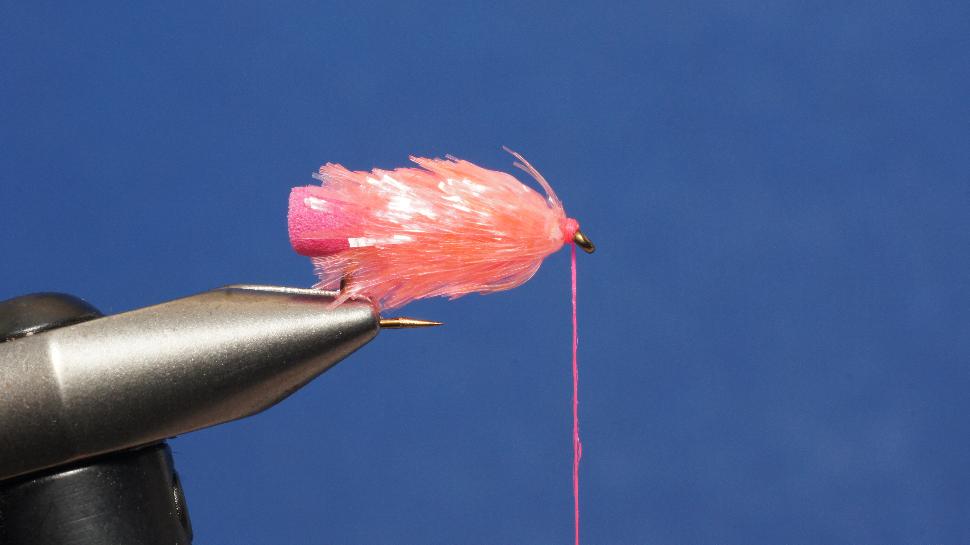The FAB is a clever blend of two popular stillwater attractors, the Booby and the Blob, two patterns that have been the subject of previous columns. Together, these three patterns form my current stillwater attractor pattern trinity.
Advertisement
From the research I have done, the FAB’s origins trace back to some English fisheries that chose to ban foam eyed flies. A ban, based in part, on the methods used to fish Booby’s and the pattern itself weren’t considered fly-fishing. As a result, foam eyed flies, such as the Booby, were not permitted. Creative fly fishers, not to be confounded or limited by this ban, modified their Booby’s by using the foam cylinders or Booby Cord to form a buoyant tail. The FAB or “Foam Arsed Blob” was born. A pattern that has exploded in popularity due to the unique behavior the foam tail imparts and the charm it holds over aggressive trout.
I typically use five millimetre diameter foam cylinders or Booby Cord in a variety of colours for my FAB tails. Larger diameter (seven millimetre) foam cylinders are also an option.
Advertisement
To reduce overall body bulk on my FAB’s I cut the foam cylinder lengthwise at one end, equal to the shank length of the hook. Wide gape, standard shank, #8 or #10 hooks work best. Cutting the foam eases the tie in process as it surrounds and envelops the shank. Splitting the foam also reduces thread breakage, as less pressure is needed to bind the foam in place. Once tied in, trim the tail to shank length. Some tiers prefer to split the tail believing the fly performs better.
Fritz, a blend of mohair, acrylic and nylon fibres, has been the standard body material for Blobs, Booby’s and FAB’s. Recently, a group of Scottish anglers, Frozen North Fly Fishers (FNF), led by Kevin Porteous, removed the mohair from the standard Fritz mix creating a nylon/acyclic body material with wonderful translucent qualities. This new blend proved an instant success. Once wet, this new Fritz transformed into a transparent jelly-like consistency, similar to the English Jelly Tot candy. ‘Jelly’ bodied Booby’s, FAB’s and Blob’s took the U.K. stillwater scene by storm as they consistently outperformed their original Fritz counterparts. Adding a Mirage Opal Mylar underbody further augmented the Jelly Fritz’s translucency as it reflected light from within the finished fly. Varying the thread colour beneath the fly’s Mylar underbody also complements the translucent nature of Jelly Fritz based flies.
Advertisement
As with original Fritz, Jelly Fritz is straightforward to work with. Fritz and Jelly Fritz can be wound dry but I find it winds best wet. Once saturated, Fritz becomes extremely manageable. Prior to tying, soak a length of Fritz in water. Sweeping the fibres back after each adjacent wrap helps form a dense body necessary for a quality Booby, Blob or FAB. To further flow Fritz fibres back once tied in and before winding forward to form the body spin the material to remove any twist. Removing any twist by spinning also works for other synthetic body materials including Brill and Polar Chenille. Singeing the opposite end of the Fritz prior to dunking prevents Fritz from unraveling.
Trout, along with other fish, don’t always take our flies because they mistake it as food. Having a cross section of attractors on hand to trigger a reaction is always wise. Attractors such as the Jelly FAB in a variety of colours are an ideal choice when fish seem reluctant to feed due to a recent weather change or are fixated on tiny organisms such as zooplankton. Appealing to a fish’s predatory, territorial or curious nature, garishly coloured attractors coupled with brisk retrieves elicit strikes. The unique individual traits of attractor patterns such as FAB’s, Booby’s and Blobs often save the day. Not to mention the savage aggressive takes these flies evoke makes fishing them just plain fun, especially to sighted fish.
How to Tie a Jelly Biscuit FAB
Hook: Standard Wet Fly, #8-#10
Thread: 140 Denier, Hot Pink
Tail: 5MM Foam Cylinder, Hot Pink
Underbody: Mirage Opal Mylar, Medium
Body: FNF Jelly Fritz, Biscuit
Tying Instructions:
-
Via Phil Rowley After placing the de-barbed hook in the jaws of the vise, cover the hook shank with tying thread.
-
Via Phil Rowley Make a shank length, lengthwise cut, up one end of a 5MM foam cylinder.
-
Via Phil Rowley Coat the thread wraps with brushable superglue. Place the cut end of the prepared foam cylinder along the hook so the shank is sandwiched between the lengthwise cut in the foam. Beginning about one hook eye width back from the hook eye, bind the foam cylinder in place back along the shank to the bend. Run the thread up and back down the hook to the bend to further compress and secure the foam cylinder in place. Trim the balance of the foam cylinder so it forms an approximately shank length long tail.
-
Via Phil Rowley Take a length of FNF Jelly Fritz and soak it in water. Strip the fibers from one end of the pre-soaked length of FNF Jelly Fritz. Tie in the stripped end of the FNF Jelly Fritz in place at the base of the foam cylinder tail. Tie in a length of Mirage Opal Mylar at the base of the tail.
-
Via Phil Rowley Wind the Mylar forward using close touching, adjacent turns, to form a neat even underbody. Tie off and trim the excess Mylar.
-
Via Phil Rowley Wind the Jelly Fritz forward using tight touching, adjacent, wraps to form a dense compact body. Sweep the Jelly Fritz back after each wrap to avoid tying any fibers down. Tie off and trim the excess Jelly Fritz. Sweep the fibers back to expose the hook eye. Apply a thin coating of brushable superglue to the tying thread. Build a neat head and whip finish.
